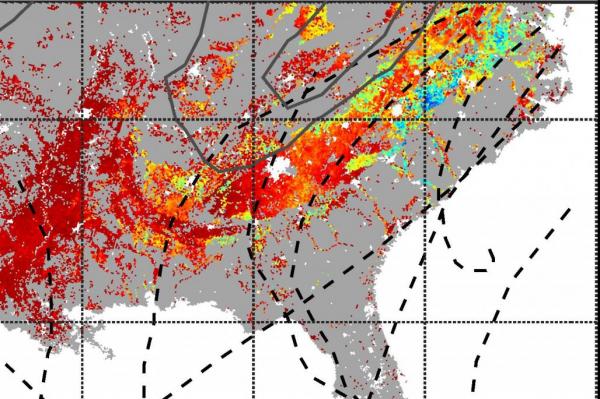
RALEIGH, N.C., May 2 (UPI) — The southeastern United States sees a handful of tropical storms and hurricanes every summer and fall. Mostly, they are known for the damage and destruction they bring.
The massive weather systems aren’t all bad, however. New research suggests the seasonal storm systems play an important role in replenishing local aquifers and inspiring vegetation growth. The uptick in photosynthesis rates allows for increased carbon sequestration, offsetting carbon released by the fossil fuel and auto industries.
Climate scientists at Duke University used a precipitation model to analyze the ecological effects of tropical cyclones between 2004 and 2007. By comparing years with fewer cyclones to more active hurricane seasons, researchers were able to tease out the influence of tropical storms on vegetation growth and carbon storage rates.
“It’s easy to make general statements about how much of an impact something like additional rainfall can have on the environment,” Lauren Lowman, a doctoral student at Duke, said in a news release. “But we really wanted to quantify the amount of carbon uptake that you can relate to tropical cyclones.”
The findings — published this week in the journal Biogeosciences — reveal the important role cyclones play in encouraging carbon sequestration, but they don’t offer a prediction for how climate change will affect the relationship.
“There are a lot of regional effects competing with large worldwide changes that make it very hard to predict what climate change will bring to the southeastern United States,” said lead researcher Ana Barros, a professor of environmental engineering at Duke.
“If droughts do become worse and we don’t have these regular tropical cyclones, the impact will be very negative,” added Barros. “And regardless of climate change, our results are yet one more very good reason to protect these vast forests.”





